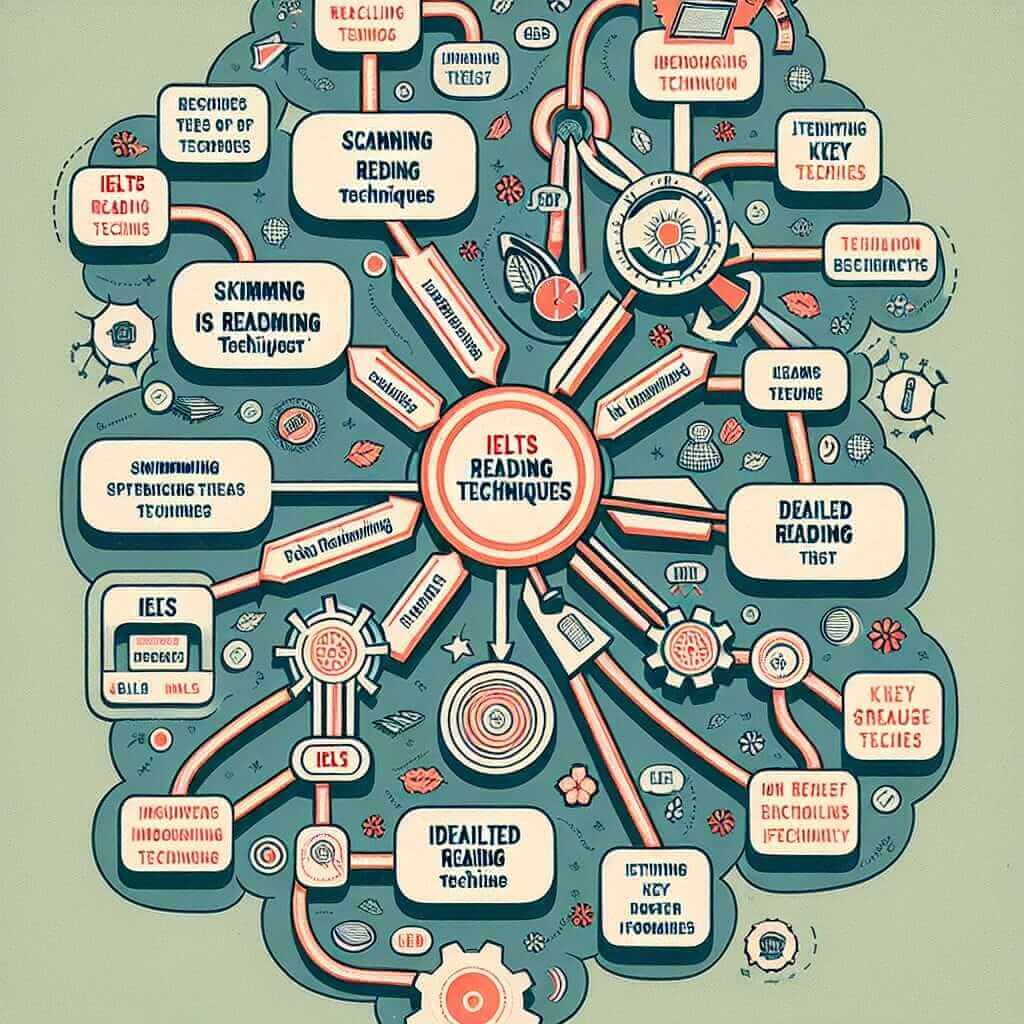When preparing for the IELTS, mastery over the reading section is essential. It’s no secret that Task 2 often presents a significant challenge to test-takers. This part of the exam requires the adept use of specific reading techniques to maximize your score. This article will delve into the critical IELTS reading techniques for Task 2, detail how to implement these strategies effectively, and provide practical examples to help you understand how to incorporate them into your preparation and exam performance.
Nội dung bài viết
- Understanding IELTS Reading Task 2
- What is Task 2?
- Importance of Reading Techniques
- Essential IELTS Reading Techniques for Task 2
- Skimming
- Explanation
- Practical Steps
- Example
- Scanning
- Explanation
- Practical Steps
- Example
- Detailed Reading
- Explanation
- Practical Steps
- Example
- Identifying Key Information
- Explanation
- Practical Steps
- Example
- Common Mistakes and How to Avoid Them
- Over-Reliance on Skimming
- Ignoring Context
- Time Mismanagement
- Practice Methods
- Mock Tests
- Short Timed Readings
- Vocabulary Building
- Conclusion
Understanding IELTS Reading Task 2
What is Task 2?
IELTS Reading Task 2 typically involves reading passages of medium to long lengths, followed by several questions designed to test various comprehension skills, including skimming, scanning, detailed reading, and more. These questions might include multiple-choice, True/False/Not Given, sentence completion, or matching headings. Therefore, understanding the nature of these tasks is crucial.
Importance of Reading Techniques
Effectively employing reading techniques can save time and improve accuracy. Since the IELTS is a timed exam, managing your time efficiently while ensuring you comprehend the passages thoroughly is vital. Let’s look into some of the techniques that can help you succeed.
Essential IELTS Reading Techniques for Task 2
Skimming
Explanation
Skimming involves quickly running your eyes over the text to get the general idea or gist of the content.
Practical Steps
- Read the title and any subheadings.
- Focus on the first and last sentences of each paragraph.
- Note keywords and phrases that are repeated or emphasized.
Example
For instance, if the passage discusses renewable energy sources, by skimming, you should identify terms like “solar power,” “wind energy,” and “sustainability” within the text.
Scanning
Explanation
Scanning is a technique used to find specific information in the text, such as dates, names, numbers, or key terms directly relevant to the questions asked.
Practical Steps
- Know exactly what you are looking for. Refer to the questions before scanning the text.
- Move your eyes quickly down the page seeking for keywords or phrases.
Example
If a question asks for the year a significant event happened, you would scan the text looking specifically for numbers.
Detailed Reading
Explanation
Detailed reading involves thoroughly reading sections of the text to understand it fully. This is often done after skimming and scanning to answer more nuanced questions.
Practical Steps
- Focus on paragraphs or sentences that contain the keywords you identified through scanning.
- Read these sections carefully, making sure you understand the context and specifics.
Example
If a question asks you to explain why a particular method was developed, you should carefully read the portion of the text where that method is discussed.
Identifying Key Information
Explanation
This involves recognizing main ideas, supporting details, and understanding the text structure.
Practical Steps
- Pay attention to topic sentences as they often introduce the main idea of a paragraph.
- Identify examples and arguments that support the main idea.
Example
In a paragraph about climate change, the main idea might be the impact of CO2 emissions, supported by specific data and examples of affected regions.

Common Mistakes and How to Avoid Them
Over-Reliance on Skimming
While skimming is useful, over-relying on it without going back to read details can lead to misunderstandings. Always ensure you use skimming as a first step, followed by detailed reading.
Ignoring Context
When scanning, getting stuck on keywords without understanding their context can lead to incorrect answers. Always read a few sentences around the scanned information.
Time Mismanagement
Spending too much time on a single question can affect your ability to complete the test. Practice allocating specific amounts of time to each question and sticking to it.
Practice Methods
Mock Tests
Regularly practicing with IELTS mock tests is one of the best ways to implement these techniques effectively. Mock tests simulate exam conditions and help you manage time and strategy use.
Short Timed Readings
Engage in timed reading activities. Take a passage and allow yourself a limited time to skim, scan, and read in detail. This practice helps build familiarity and comfort with the techniques under timed conditions.
Vocabulary Building
Expand your vocabulary to improve both your skimming and scanning abilities. The broader your vocabulary, the quicker you can recognize and understand text contextually.
Conclusion
Mastering the IELTS reading techniques for Task 2 can significantly enhance your performance in the reading section of the exam. Focus on understanding and practicing skimming, scanning, detailed reading, and identifying key information. Remember to avoid common mistakes and manage your time efficiently. With diligent practice and the right strategies, you can achieve your desired IELTS score. Feel free to leave comments or share your experiences and tips regarding IELTS preparation. Happy studying!